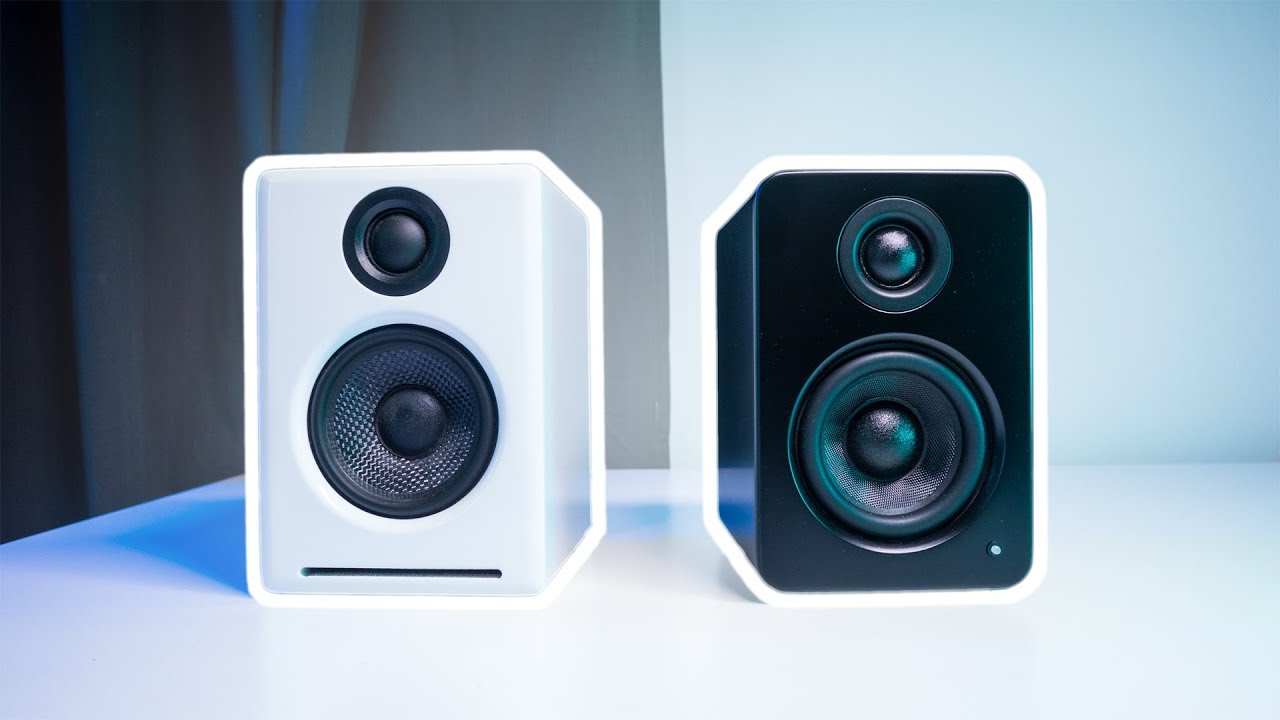Simple answer: passive speakers require an external power amplifier and active speakers have an amplifier built into them (just need a power source to operate). Both can sound great, and depending on your selection, will sound better than any speakers that are specifically marketed towards PC users (EX: the infamous Logitech Z-series). Here's a quick rundown of advantages and disadvantages with each – let's start with active speakers.
Active speakers & active monitors (these aren't quite the same thing), like stated above, have their own internal amplifiers and volume control. These are most commonly bookshelf size speakers (Note: some active towers also exist). These generally don’t require much space and don’t require any amplifiers or other components to work. This means they are often are a good desktop PC solution, because you can hook them directly up to the audio output from your motherboard, soundcard, or any line-level signal. Most active speaker sets are completely standalone, but a few have ports that allow you to hook up a separate active subwoofer. However, active speakers have one very large disadvantage: unlike passive speakers, there is generally no future upgrade path, whatsoever. Additionally, some tend to have fairly high noise floors, and the controls for them can be inconvenient (such as volume control on the rear). They also tend to cost more than equivalently performing passive bookshelf speakers, due to the internal electronics.
Passive speakers require a separate power amplifier to function. This means that, at minimum, you will need an integrated amplifier to make them work for you, and that has to be taken into account when planning for where to place them, as well as the financial impact of their purchase. However, their advantages are numerous. By purchasing passives, you have flexibility moving forward to upgrade your system by replacing the amplifier (EX: if you wanted to add bluetooth, simply buy a new amp with bluetooth), buying separate components, or adding additional speakers if using an AVR. If your use changes (for example, turning your near-field bookshelf speaker setup into TV speakers), you have the flexibility to add a more powerful amplifier and adapt your old speakers for their new use. Finally, they also allow a bit more flexibility in diagnosing any issues you may have: if a speaker isn’t working, feel free to swap the left and right speakers or swap out your amplifier. If anything breaks with an active set, you may very well be sunk, or at minimum have difficulty diagnosing it.


